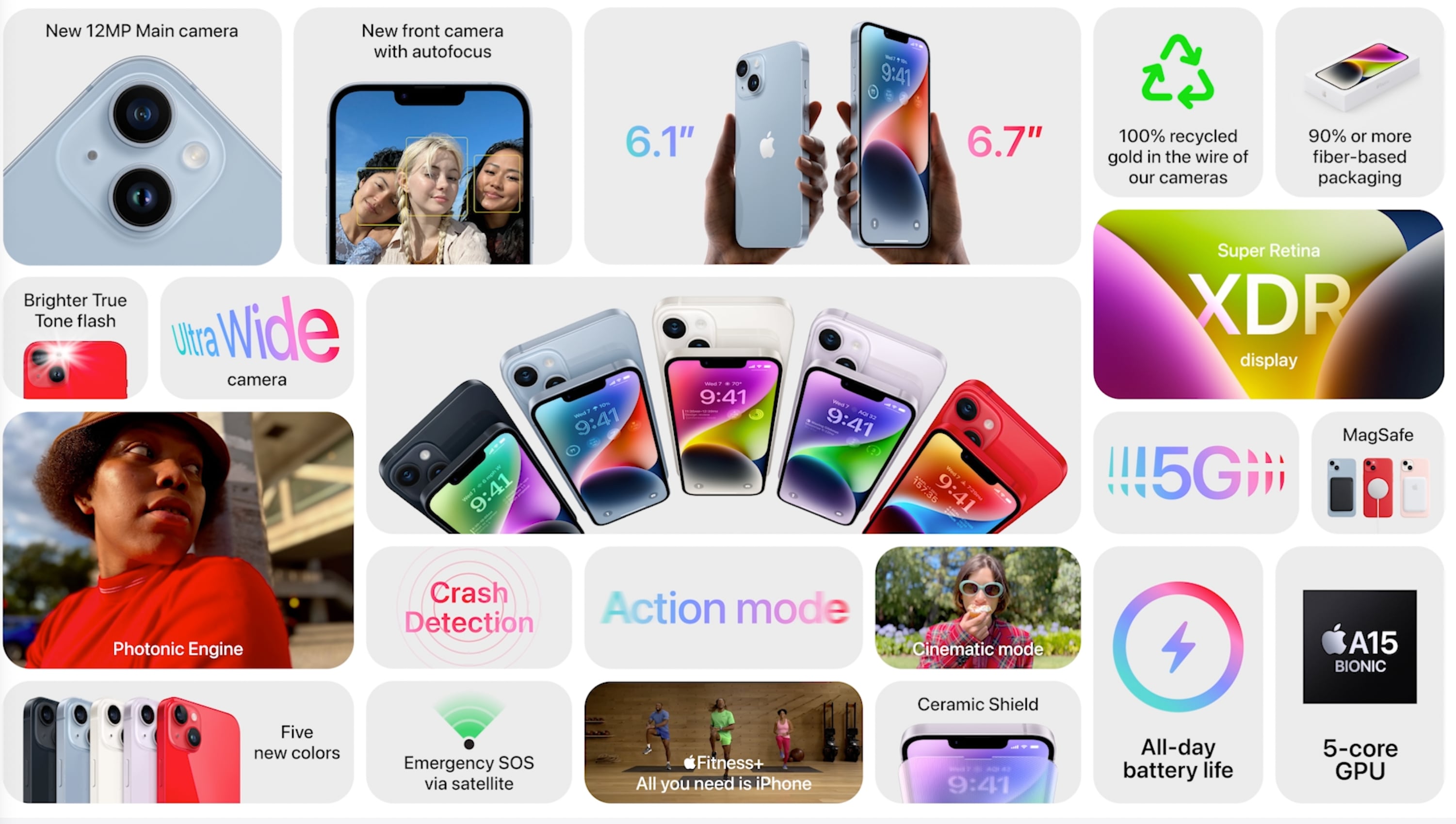Apple introduced the iPhone 14 at a press event today. The new phone draws inspiration from the iPhone 13 with sharp aluminum edges, rounded corners, a glass back, the familiar notch at the top of the device and a Lightning port.
The biggest change in the lineup is that the company isn’t updating the iPhone 13 mini. Instead, the company is releasing the iPhone 14 in two sizes — the iPhone 14 and the iPhone 14 Plus. They have a 6.1-inch and 6.7-inch display respectively. If you like small phones, there’s no new device for you. But if you want a big iPhone without buying a Pro model, the iPhone 14 Plus is for you.
“iPhone 14 also has an updated internal design that improves thermal performance,” VP of iPhone Product Marketing Kaiann Drance said. For instance, you can play games for longer sessions.
Apple uses the A15 Bionic system on a chip for the iPhone 14 and iPhone 14 Plus. It’s the same system on a chip that you can find in the iPhone 13 lineup.
On the back of the device, there’s a new main camera with a larger sensor and faster aperture (f/1.5). It features sensor-shift optical image stabilization. Apple says you can expect a 49% improvement in low-light performance.
On the front, there’s a new TrueDepth camera with a faster f/1.9 aperture. The selfie camera also has autofocus for the first time, which should help with keeping faces sharp.
Camera is a big focus of the iPhone 14. Apple also says that the image processing algorithm has been improved with deep fusion happening earlier in the pipeline. With video, there’s a new advanced stabilization mode. It’s called action mode, and it uses the full sensor to stabilize the video without any extra hardware — no gimbal required.
In the U.S., Apple is dropping the SIM tray. Instead, customers will have to switch to eSIM. Apple said specifically that this is a change for customers in the U.S. International iPhone models should still have a SIM tray.
Like with the Apple Watch Series 8, the iPhone 14 has new sensors that can detect a car crash. It can help you call emergency services more quickly. And if you’re in the middle of nowhere and don’t have Wi-Fi or cell service, the iPhone can still help you with emergency SOS via satellite. As long as you’re outside with a clear view of the sky, you can send a message to emergency services.
On your phone, you can see where satellites are and how to point it at them. Once connected, you need to send and receive enough information to get help. Apple has created a custom, short text compression algorithm. It can take from 15 seconds to a few minutes to send a message. You can also select standard answers from a list of preconfigured messages to speed up the conversation.
Even if you don’t need help, you can still use this satellite-powered feature to update your location in the Find My app. It can be useful if you’re on a long hike for instance.
The iPhone 14 will start at $799 while the iPhone 14 Plus starts at $899. Pre-orders start on September 9th. The iPhone 14 will be available on September 16th while the iPhone 14 Plus will be available on October 7th.

Apple unveils the iPhone 14 and iPhone 14 Plus by Romain Dillet originally published on TechCrunch
DUOS






